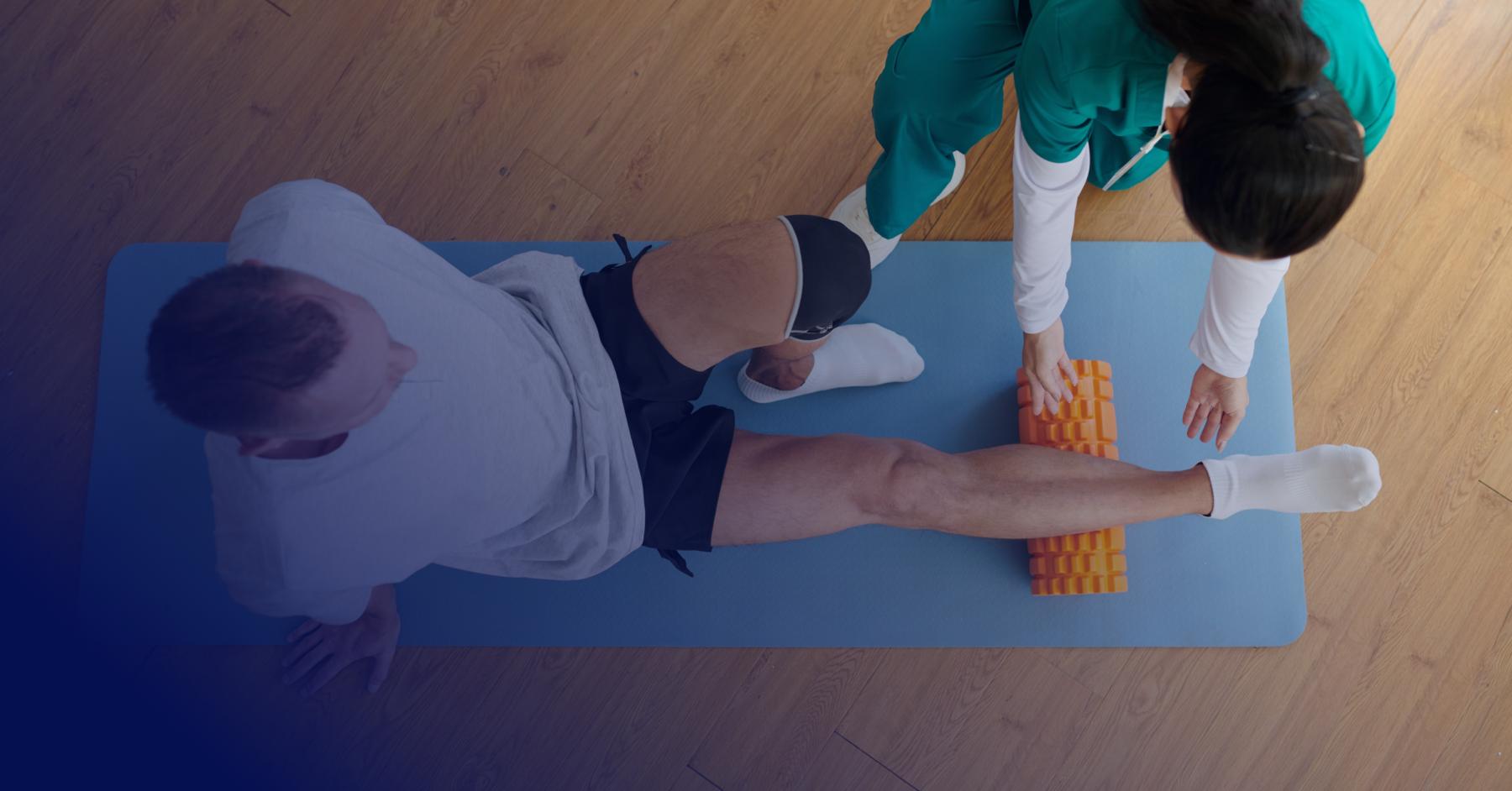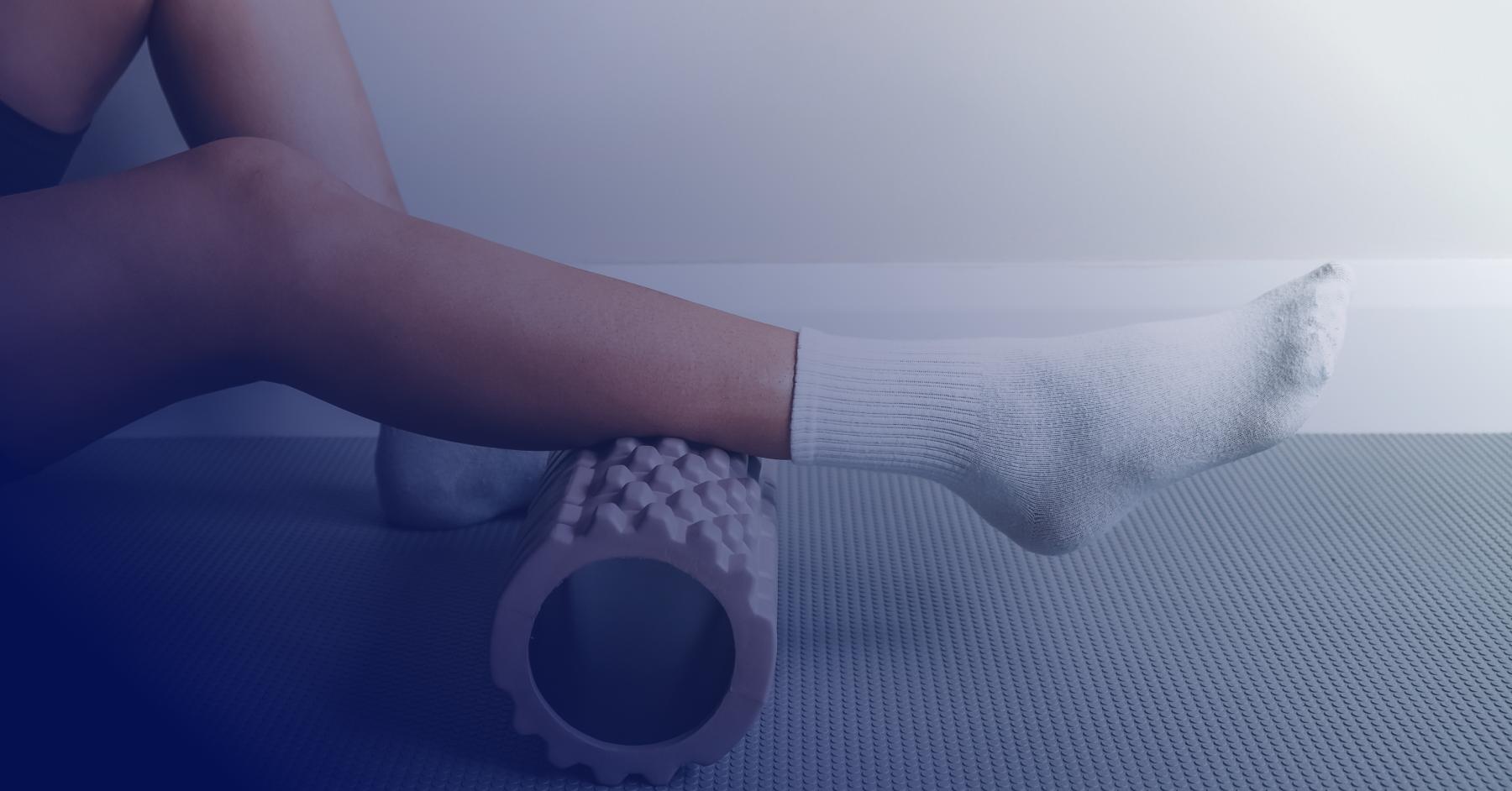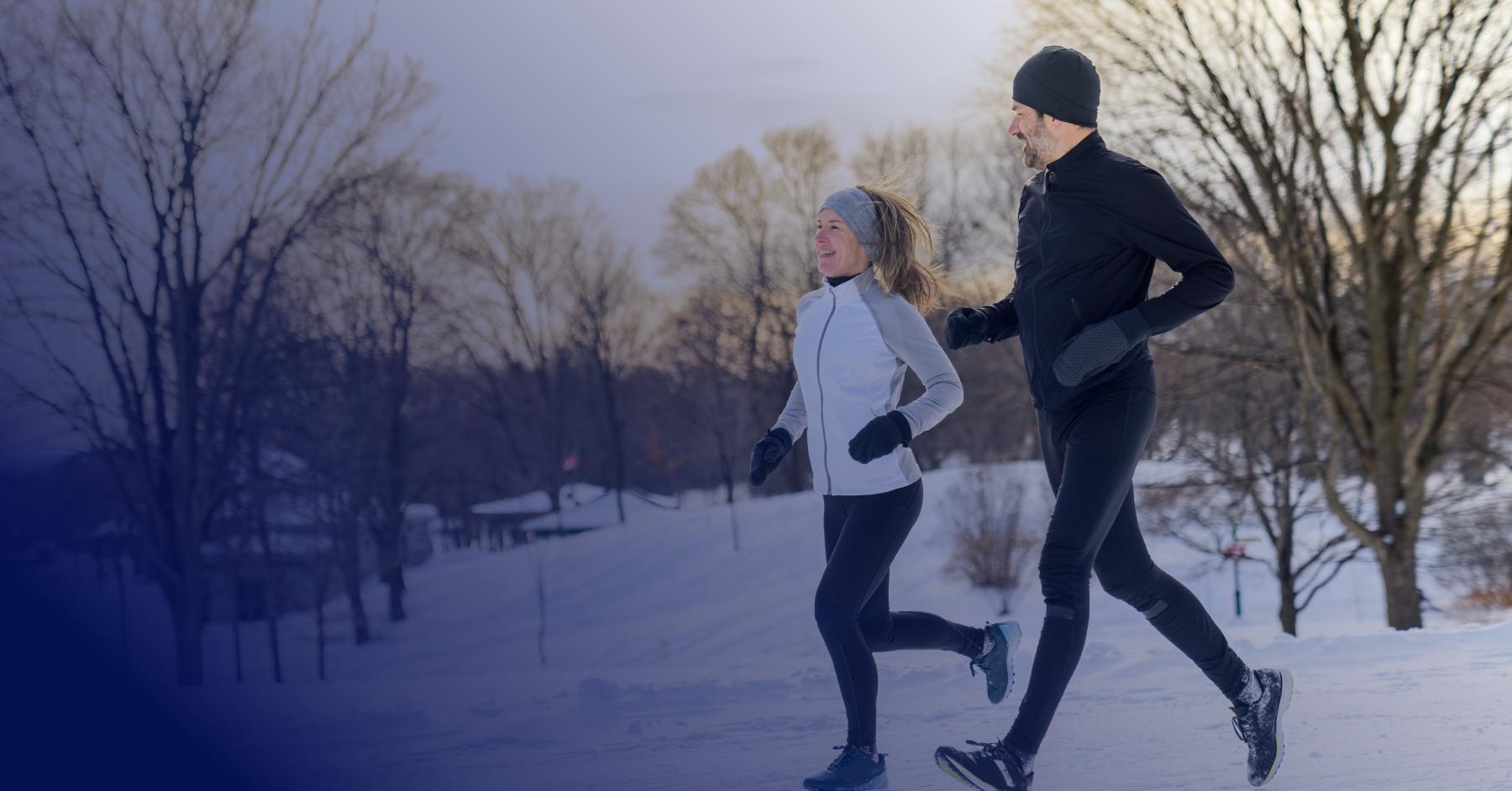Play It Safe with the Right Sporting Gear
Sports Medicine, Workout Injuries
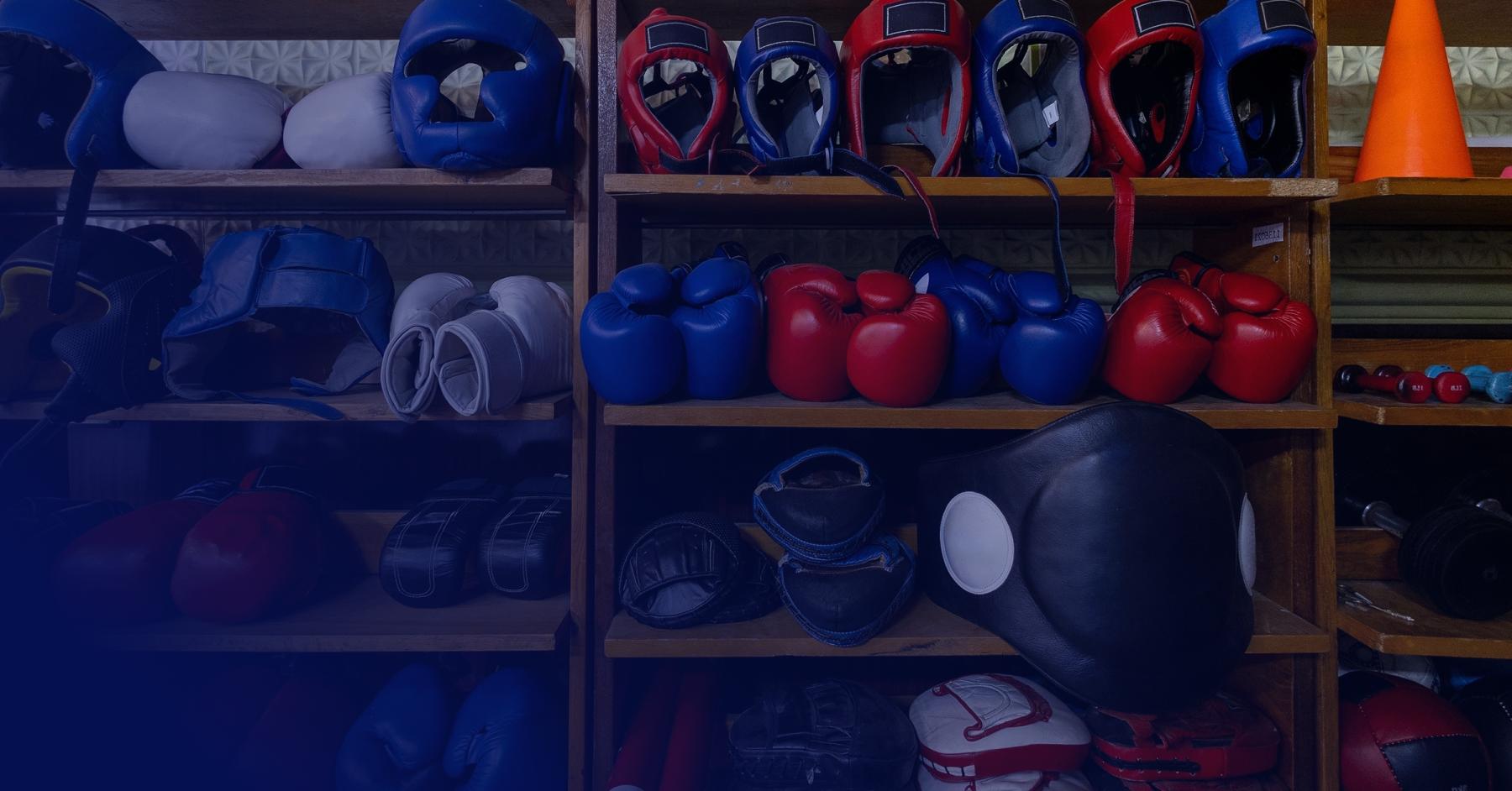
In 2024, 4.4 million people visited the ER for injuries connected to sports and recreational equipment. But that doesn’t mean you should avoid gear altogether. In fact, high-quality, properly-fitted equipment is one of the best ways to prevent injury.
You know how you layer up before heading out into the cold? Your workout deserves that same kind of prep. Whether you’re going to the gym, running laps, or suiting up for a game, the gear you choose can make a huge difference in how you move and how you feel.
What you put on before you work out matters, and it’s as important as warming up or staying hydrated. Proper gear supports vulnerable joints, reduces impact, and helps you move efficiently. With plenty of products to choose from nowadays, how do you pick the right equipment for your body?
That’s where a physical therapist or sports medicine physician can help. They’ll analyze how your body moves and recommend equipment designed for your sport and your needs. Here’s how the right protective equipment and guidance can keep you performing at your best.
How the right gear helps prevent injuries
High-quality gear isn’t just something athletes wear because they “should.” It genuinely changes how your body handles stress, impact, and movement.
Here’s what it does for you:
- Absorbs shock. Shoes, helmets, and padding help soften the blow from repeated impact.
- Lowers your risk of major injury. When protective gear fits well and is worn correctly, it reduces your chances of serious trauma.
- Lets you focus on the activity. When you trust your equipment, you can stay in the moment instead of worrying about getting hurt.
On the other hand, gear that’s worn out, too loose, too tight, or just not right for your body can actually increase your risk of injury. A physical therapist can quickly spot whether your equipment is supporting you—or working against you—and help you make small changes that lead to big improvements.
How physical therapists can help you stay safe
Physical therapists spend a lot of time understanding how the body moves—and how gear can help (or hurt) that movement. Sporting gear manufacturers put out new products every year. Don’t be swayed by the latest trends; instead, focus on what really matters for you.
Here are the main factors physical therapists look at:
- Movement analysis. Your therapist watches your gait, posture, and alignment to find imbalances. Then they recommend gear that helps correct or support those issues.
- Your sport and where you feel stress. Different activities stress different joints. Your therapist helps match gear to the body parts you rely on most.
- Reducing pain and preventing flare-ups. Equipment like braces, sleeves, and compression gear can help reduce pain and improve stability during activity.
Running gear for injury prevention
One of the most popular products in the protective equipment market are running shoes—not surprising when you consider the stress runners put on their feet, ankles, and knees. To prevent strains, sprains, and the dreaded shin splints, concentrate first on finding the proper footwear:
Pick a shoe that matches your pronation
When you’re choosing running shoes, match them to how your foot naturally moves. If you overpronate (your foot rolls inward more than it should), look for a stability shoe with strong arch support to keep your stride aligned. If you underpronate or supinate (your foot rolls outward and doesn’t absorb shock well), you’ll want a softer, well-cushioned shoe with plenty of flexibility to help reduce impact. And if you have neutral pronation, a standard neutral running shoe with balanced cushioning is usually the best fit.
Analyze how your foot lands
If your heel hits the ground first when you run, choose a shoe that cushions and supports the heel. Midfoot and forefoot strikers benefit from lightweight but supportive shoes with a lower heel-to-toe drop and flexibility in the forefoot.
Wear compression socks
Tightly woven compression socks keep blood flowing to the muscles as you run, enhancing your performance and aiding muscle recovery after a long run.
Consider knee or ankle braces
Knee braces help absorb the impact of pounding on pavement and may prevent future injuries. An ankle brace can also reduce the chances of repeat ankle sprains.
Replace worn out shoes
Check your running shoes for signs of wear and replace them. Continuing to run on worn-out footwear only raises your risk of sprains, muscle strains, or even stress fractures.
Running injuries can happen even to the most well-conditioned and experienced runner. Consult with a physical therapist on what steps you can take to get safely back on track and what equipment can get you there quickly.
Top protective gear for contact sports
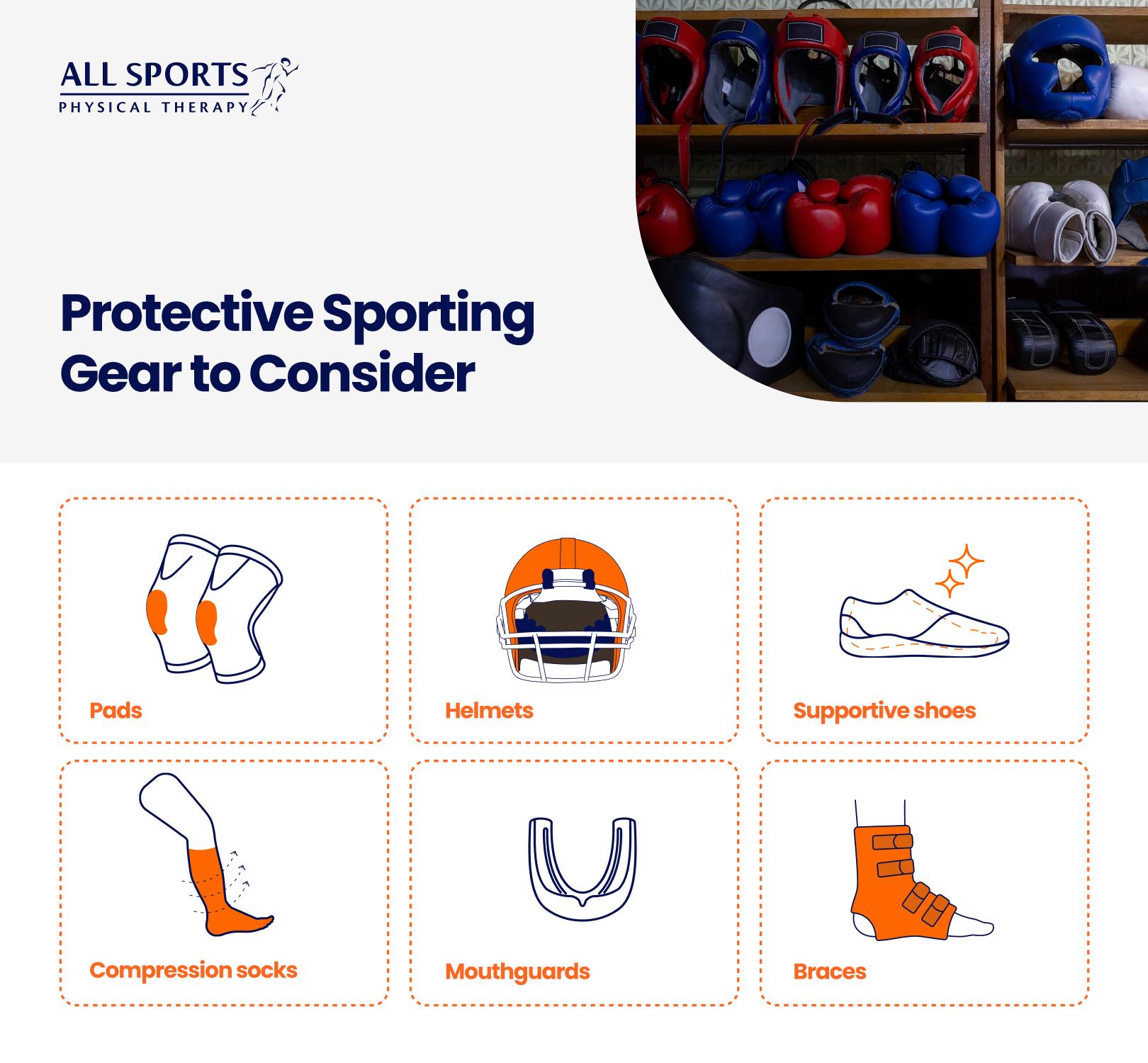
Hard-charging contact sports like football, hockey, and martial arts should only be practiced with the highest quality sporting equipment. Sturdy equipment helps players withstand strong blows to the body and boosts overall safety.
Start with the essentials:
- Helmets. A new helmet with padding attached directly within it protects the head from hard blows. Look for one that has met the safety standards of the National Operating Committee on Standards for Athletic Equipment, or NOCSAE.
- Body pads. Shoulder, knee, elbow, and shin guards prevent bruises from forceful hits.
- Mouthguards. Preserve the teeth and jaw with moldable mouthguards available in sporting goods stores.
Your body changes—swelling after a game, weight changes, or muscle loss during recovery can all affect how gear fits. A trainer or physical therapist can help you make sure everything stays secure and comfortable.
Gear that helps you recover
Sporting equipment is not just for injury prevention. Some types of protective gear can speed your healing after an injury, including:
Tapes/braces. These stabilize joints and tissues as they heal. Kinesiology tape can also improve circulation and reduce pressure on irritated areas.
Compression socks. Compression stockings compress the veins to keep the blood moving. This surge of blood can heal muscles after an intense workout or injury.
Orthotics. For runners, orthotics or shoe inserts can lift a flattened arch or relieve pain caused by plantar fasciitis, a common running injury.
How to choose the right gear for you
There’s no perfect, one-size-fits-all piece of equipment. But here’s how to narrow your options:
- Consider your sport. Different activities stress different joints.
- Be realistic about your level. A seasoned athlete requires specialized equipment that a beginner might not.
- Make fit a priority. Try out any new equipment to make sure it fits correctly and doesn’t restrict your natural movement. Ill-fitting gear can often lead to injury.
- Refresh your supply. Constantly inspect your equipment for any wear and tear and replace anything that’s damaged, loose, or worn down.
- Ask for help. Go to a physical therapist or trainer if you’re unsure what gear is no longer usable and if a new piece is needed.
Protective gear isn’t just “extra.” It’s a key part of staying healthy, active, and confident in your sport.
Play hard, stay protected
The right gear helps you perform at your best and gives you peace of mind. But even the best equipment wears out, so keep an eye on anything that feels off, looks worn, or stops supporting you the way it used to.
Our team of physical therapists at All Sports Physical Therapy are here to advise on the best protective equipment for your sport or workout. Reach out to one of our offices to get personalized recommendations for your sport or workout routine.
FAQs
What is protective equipment in sports?
Protective equipment in sports is any device or apparatus designed to protect athletes from injury. It could be anything from a football helmet and customized running shoes to a knee brace.
How does proper equipment prevent sports injuries?
Protective sporting gear provides extra cushioning and support to joints impacted the most by a particular sport or exercise. The gear can absorb the significant stress placed on joints and safeguard them against injury.
What is the best way to prevent sports injuries?
Injury prevention is a multi-pronged strategy. Protective gear is one element, but so is practicing perfect form, healthy nutrition, hydration, and rest.
What helps with sports injuries?
It depends on the injury. A bone fracture requires different treatment than tendonitis. In general, rest, physical therapy, medication for pain management, and immobilization remain the trusted methods for injury recovery. Surgery may be needed for severe injuries.
What is the hardest sports injury to recover from?
A torn anterior cruciate ligament (ACL) is considered the lengthiest and most challenging sports injury to heal from. Anytime you think you’ve suffered a serious musculoskeletal injury, consult with an orthopedist for immediate treatment.

